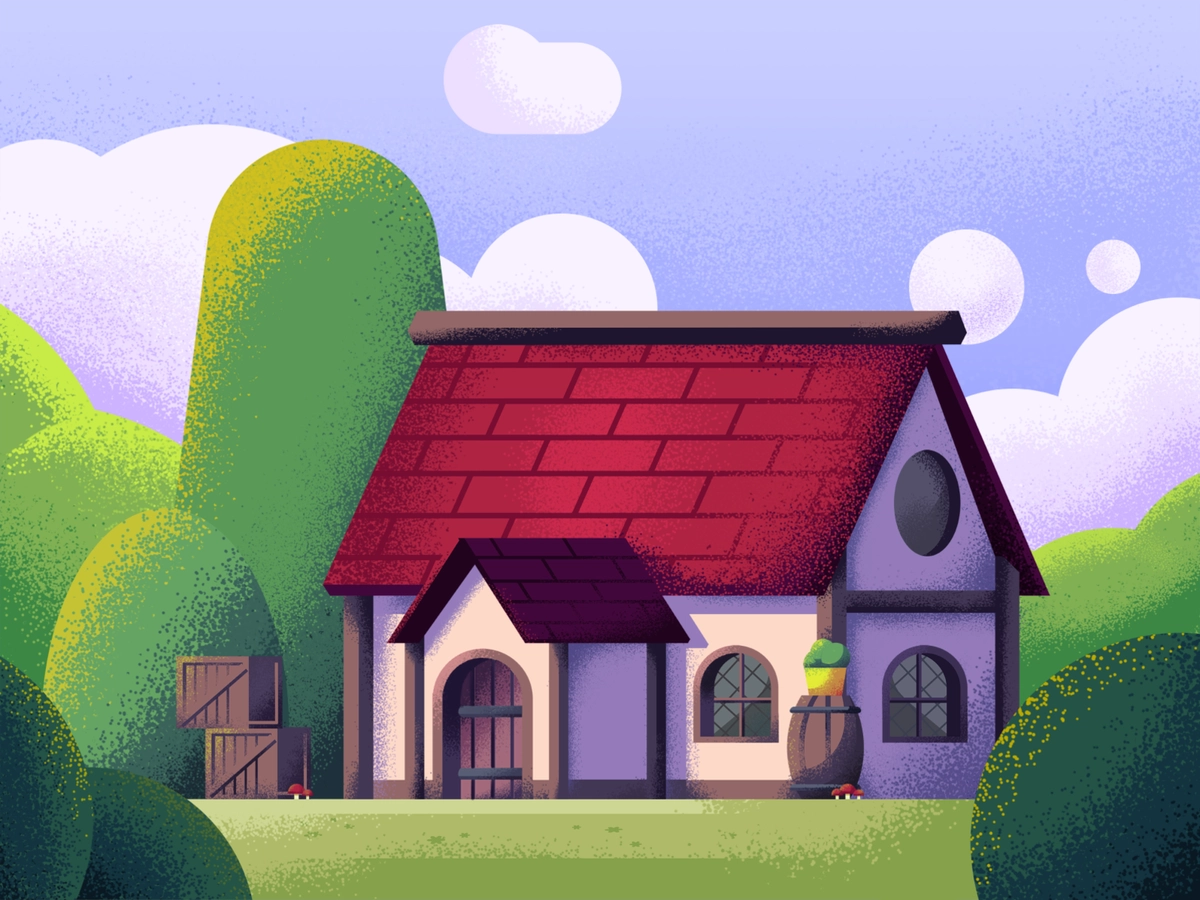The year 2023 is here, and now is the best time to observe the front end development trends that are unfolding. In this article, we are going to overview the most popular JavaScript frameworks of 2023. If you do not adapt to change, you are bound to get buried by the competitors who do.
Unlike any other industry, trends in front end development can change faster than we can keep up with. This year is a very promising one when it comes to the most popular front end technologies and the trends that await us. Let’s take a look at our short guide on the 2023 frontend development trends and the best JavaScript frameworks.
Benefits of Frontend Technologies for Web and Mobile Development
Frontend refers to how the digital product looks, its appearance. It’s uber important, as it’s the primary thing affecting the user’s first impression of the company in the digital world. The aesthetics of the software matters since it reveals the brand’s culture and helps set a connection with customers at the emotional level. Moreover, great front end development services allow you to provide an excellent user experience. Frontend development comes with the nest benefits.
Faster development
The first and foremost advantage of frontend development is the opportunity to build the product faster. Using modern JavaScript frameworks, you can develop the needed set of features and program how they will look for the end-user. Front-end development should go hand-in-hand with back development.
Enhanced security
We live in the age of cyberattacks and hacks. That’s why cybersecurity has gained particular importance. Fortunately, all frontend frameworks are comparatively secured and allow building software products with enhanced data protection. Frontend development technologies ensure smoother site or app performance and enable you to secure the product from possible cyberattacks and data leakage.
Real-time programming
Today, it has become possible for programmers to review all changes and modifications in the browser without the fear of losing the status of an app or site, as well as without the need for re-loading pages repetitively.
Easy to learn, scale, and use
Most frontend development frameworks offer many benefits to beginners, as they are relatively easy to learn. Moreover, frontend technologies have convenient and user-friendly constructing layers making products particularly easy to scale.
More responsive features
The latest frontend development frameworks enable programmers to create outstanding software products with more responsive features. It allows building fast applications with excellent overall performance as well as seamless functioning of its distinct features.
15 Top Frontend Trends In 2023: Front End Latest Technologies
#1. The popularity of JavaScript is still increasing
Let’s start with the elephant in the room. Of course, it’s not surprising, JavaScript still is one of the most widely used programming languages today. It offers the largest range of libraries and frameworks. It seems that every developer can find exactly what he or she is looking for there. React and Angular Js frameworks are the most popular from the list. Also, there are a couple more to consider.

Many people choose React since it is more trendy and continuously changing. The easiest techniques to reuse UI components are provided by this framework, making it straightforward to complete the task. React is superior to Angular because of its virtual DOM, rendering optimizations, and simple version migration.
AngularJs is an open-source application framework that is used to build interactive website elements. It is a very popular framework because of its efficiency, simplicity, and adaptability. AngularJS may be summed up as a structural framework for dynamic web applications.
In addition to being one of the fastest web development frameworks, Vue. js provides flawless user interfaces and single-page applications. React. js or Angular are slower than Vue. js when launching mobile apps, however.
You may also try React framework. One of React’s main advantages is how simple it is to understand, especially if you are already an expert at JavaScript. React can be installed in a few hours, and you can start building web applications right away once you’re up and running. There is a ton of clear documentation available.
Another framework to consider is Gatsby. Sites created using Gatsby are not only incredibly quick, but they also have an inherent level of security because there is no database or server involved. Moreover, unlike typical React applications, they greatly facilitate SEO because crawlers can find the content.
Exploring the React Native vs Flutter debate helps developers understand the strengths and limitations of each framework for mobile app development.
Flutter as the top cross-platform framework for mobile development in 2023. React Native falls short of Flutter by 4% (42% versus 38% for Flutter). However, it’s accurate to claim that both technologies are used almost equally. A simpler and more effective approach to achieve this is provided by Flutter. Unlike Java, which requires separate coding for each platform, Flutter allows developers to write code once and compile it for both the iOS and Android platforms. Through a single code, Flutter may be used to construct backend and desktop apps for Linux, Mac OS, iOS, Android, Windows, and other operating systems. Flutter is a well-liked framework for creating mobile apps, and it provides quick development, excellent performance, and affordability.
Alternatively, freestanding using a basic script inclusion is feasible without any front-end framework. Over 5 million cross-platform apps have been made due to the Ionic framework’s popularity as the most widely used cross-platform app creation tool. Ionic is an open-source UI toolkit with integrations for well-known frameworks like Angular, React, and Vue for creating high-performing, high-quality mobile apps utilizing web technologies, including HTML, CSS, and JavaScript.
#2. Static websites are coming back
Static websites are one of the new front end technologies. In a nutshell, static websites are those that do not require any databases for preserving data. It means that a frontend developer does not need a backend developer to create a static website. Why are we witnessing such a comeback? The answer is pretty basic: static websites are cheaper to develop, they are safer, and they are a lot faster than dynamic ones.
#3. AI-based chatbot enhance customer experience

AI-powered chatbots have become the ultimate answer to many questions in customer experience. They make customer interaction with a company more “human” and help set long-term relationships between them. With the advent of artificial intelligence, chatbots have become even more convenient and “smarter.”
They recognize human speech and provide even more logical answers. Some of them can even hold a conversation like a real human and tell jokes to the user. Therefore, AI-based chatbots are worth being listed as one of the top front end 2022 trends.
#4. Progressive web apps are gaining momentum
According to recent studies, people spend a minimum of 1-3 hours using their mobile devices daily. Attempting to meet the modern user’s needs, companies start creating web apps that provide excellent mobile experiences for their visitors.
Progressive web apps (a.k.a. PWAs) are web applications that are indistinguishable from native apps, to the users. Their main advantages are that PWAs are fast (the main part of the data is stored in the cache), they load in a matter of mere seconds, and they do not need an Internet connection to operate properly (they can work offline).
Surely, the main advantage of PWAs is the radical improvement of user experience, which is guaranteed to lead to an increase in conversion rate, as has been proven by the case of Flipkart.
#5. Single-page websites are trendy today

One-pagers are nothing new to the world of web development; however, their advantages are the reason single-page websites appear on the list of frontend trends 2023 has to offer us.
First of all, single-pagers are obviously faster and cheaper to develop. This one is pretty obvious.
Secondly, they are not over complicated with navigation and tons of content to search through. Users can find all the information that interests them by scrolling through the page, simple as that. Thirdly, such websites are more mobile-friendly than traditional ones. Remember the statistics on smartphone daily usage, above?
Of course, one-pagers are not a one-size-fits-all solution. Yet, because simplifying everything we do seems to be the main trend today, they are guaranteed to stick around and gain even more popularity in 2023.
#6. Animation in a user interface design
Minimalist designs are great and always in trend. However, modern users are already tired of them. On the contrary, animation can make website design even more memorable and exciting. Moreover, it also helps improve the overall user experience and website usability.
For instance, developers can add motions to transitions between different pages or charts. The key thing they should remember to do is to keep the balance between “not enough” and “too much” animation. The main reason for animation’s increasing popularity is that this tool allows developers to add animations without having to possess strong knowledge of JavaScript or jQuery in detail.
#7. Simplicity
Although we love fantastic animations and bold UI designs, we still prefer websites that are easy-to-use and… simple. Thus, simplicity is the next frontend trend that is worth considering. No matter what kind of product you create, try to keep it simple and intuitive.
#8. Advancements in cloud computing continue
Cloud computing has become especially important today when almost the entire world works remotely, from homes. Data saved on clouds are easily accessible for teams and other project stakeholders, no matter where they are located. According to Gartner, the public cloud services are anticipated to increase up to $306.9 billion this year, compared to $242.7 billion in 2019.
#9. No SQL databases
Another important trend gaining momentum in 2023 is no SQL databases. Before considering them, let’s take a look at the context of their appearance.
SQL databases are relational databases built in the ’70s to decrease duplicate storage. However, they had some disadvantages, such as a very complicated structure, making them an expensive solution to scale them vertically.
That’s why developers created no SQL databases far back in the ‘2000s as a solution that is oriented at scaling, speedy queries, and frequent modifications in and out of the database.
#10. Chatbots and AI
We have been caring about customer service before. However, the Coronavirus recession has made us rethink its importance once again. Many companies have started incorporating artificial intelligence into their customer support to provide even more comprehensive service to buyers, reduce anxiety, and increase their satisfaction.
In particular, big companies dealing with big data have realized that relying only on “human” customer service is inefficient when the platform serves a vast number of users. AI-driven chatbots have become the intelligent solution powering large brands worldwide.
#11 HTML5 & CSS
Two of the primary technologies for creating Web pages are HTML (the Hypertext Markup Language) and CSS (Cascading Style Sheets). For a range of devices, HTML provides the page structure while CSS handles the (visual and auditory) layout. The three primary languages used by web developers to create websites are HTML, CSS, and JavaScript. The programming language is JavaScript, HTML is used to structure the website, and CSS is used to style and layout the web page. Nevertheless, CSS is now much more than just a design language. It offers a more robust and adaptable method for creating web apps, empowering business owners and entrepreneurs to offer better user experiences.
#12 Custom Animations and Transitions
A slide’s individual elements, such as text, forms, images, etc., might have a specific effect called animation. When you leave one slide and go on to the next during a presentation, a transition takes place. These effects contribute to the development of new-generation UI and an interactive engaging UX. Animations called transitions are used to keep users focused during UI state changes and object manipulations and make those changes feel seamless rather than abrupt. The perception that users are engaging with actual items is frequently created via smooth transitions.
#13 Serverless Architecture
Becoming serverless isn’t only a trend we’ll see in 2023; it’s also a way to address many of the problems that web developers are already facing. Due to the fact that you won’t have to worry about setting up and managing servers and infrastructure, it’s an amazingly efficient approach to employing cloud computing. All of that effort is handled by the cloud provider so you can concentrate on creating code only.
#14 Server-Side Rendering
All websites were created using HTML in the past, and server-side rendering was the norm. But, as JavaScript gained popularity, server-side rendering became less prevalent. SSR is back, though, and it’s better than ever. The web app must first be rendered on the server before being hydrated on the client. Large online and mobile applications that need to load quickly and be more SEO-friendly benefit greatly from it.
#15 Framework usage
Web developers may quickly add unique functionality and make basic web designs with the help of front-end frameworks which optimize work dramatically. there’s plenty to choose from: React, Angular, Gatsby, Vue.js, Ember.js, and more depending on your project requirements and peculiarities. Just a few of the frameworks used in front-end development today are listed above. In order to stay up with the constantly changing requirements of the modern web development process, frameworks will continue to change as technology does. And you keep up.
The Bottom Line: What Is The Future Of Front End Development Going To Look Like?
We can observe one key trend that is here to stay: simplicity. We have also considered the best front end technologies 2022 that fit into this trend, such as Vue.js and Gatsby, are definitely going to take advantage of it to gain popularity; however, this in no way means that the frameworks backed by Google or Facebook are bound to disappear. It just means that they also have to adapt in order to not lose the battle against new easy-to-use frameworks, as Next.js has shown us.
There is, of course, one thing to keep in mind: there is not one only of the top front end frameworks 2022 has or will bring us. Any framework has its pros and cons, and it is up to you to choose the one that suits the needs of your project the best.
Are you overwhelmed by the variety of choices when it comes to following the latest trends in front end development and selecting JS frameworks? Reach out to us to get a professional consultation on how to use front end development trends 2022 that fit your ideas, and how to implement them to find front end web developer for hire and create a trending product with front end development services.





















